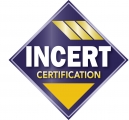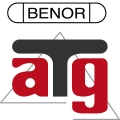Building intrusion is a relatively common crime. In addition to their valuables being stolen, it can potentially cause long-term anxiety for the people whose homes were broken into.
A detection and alarm system is not only used to discourage the thief but more specifically, to signal any intrusion into the building.
Alarm systems are therefore an effective means of protection against intrusion. They carry the CE marking in accordance with the EU's Electromagnetic Compatibility and Low Voltage Directives or the Radio Equipment Directive. However, contrary to what most consumers think, this CE marking does not attest to the system's performance. It only guarantees a minimum immunity level against electromagnetic disturbances and minimum electrical safety, so that it can be sold in the European Union.
Effective detection and alarms require the installation of products whose reliability and immunity to false alarms are certified by ANPI, a voluntary seal of approval that attests to their quality.
The ANPI Certification Division issues certificates for both European standards (EN50131 series and EN50136 series), and CEB requirements (T014(A), T031 and T033).
This certification is used to obtain INCERT Product approval from the CEB.






